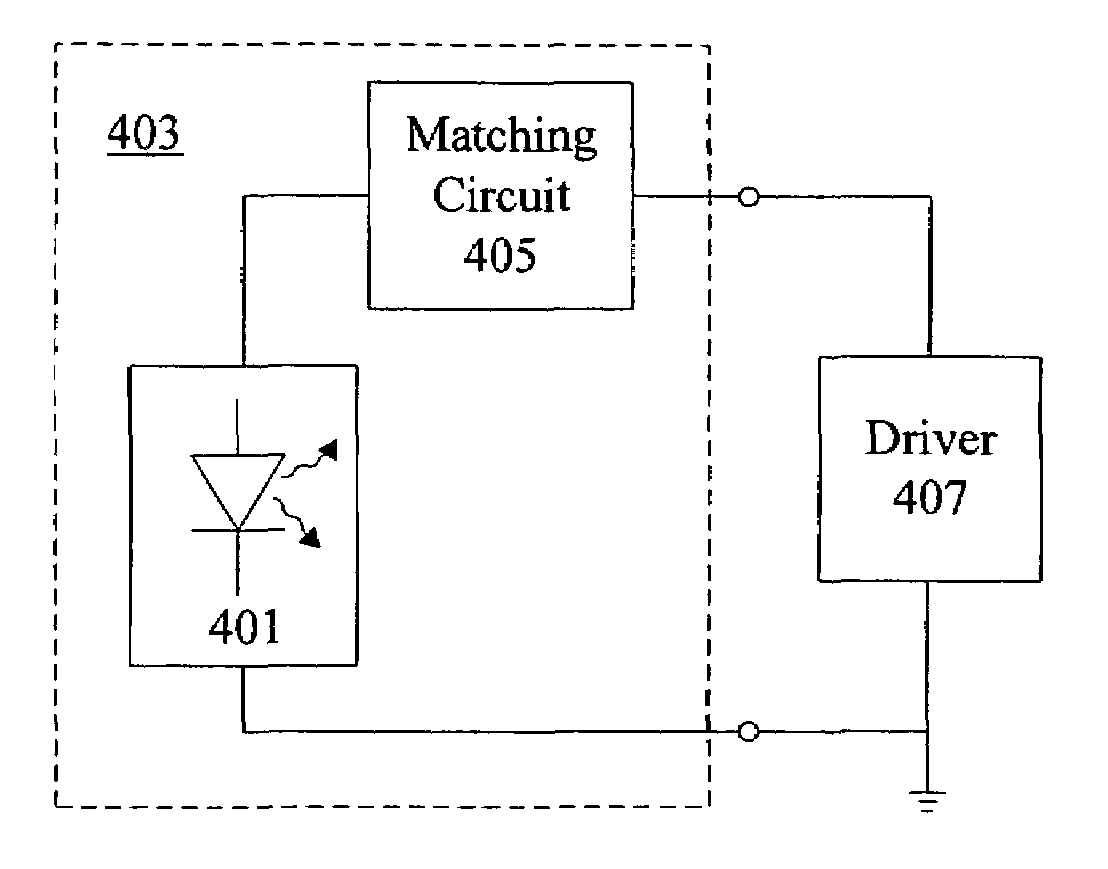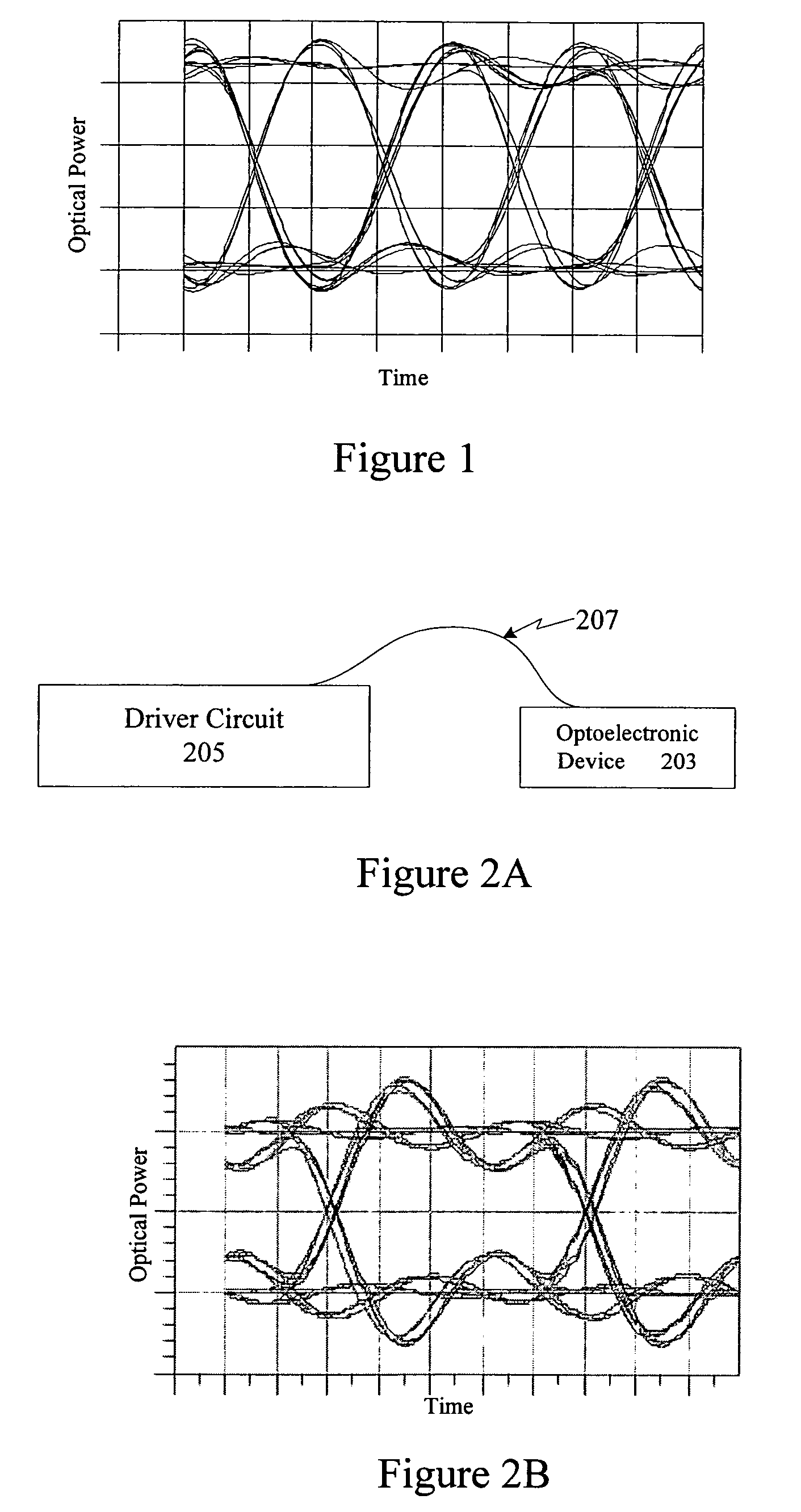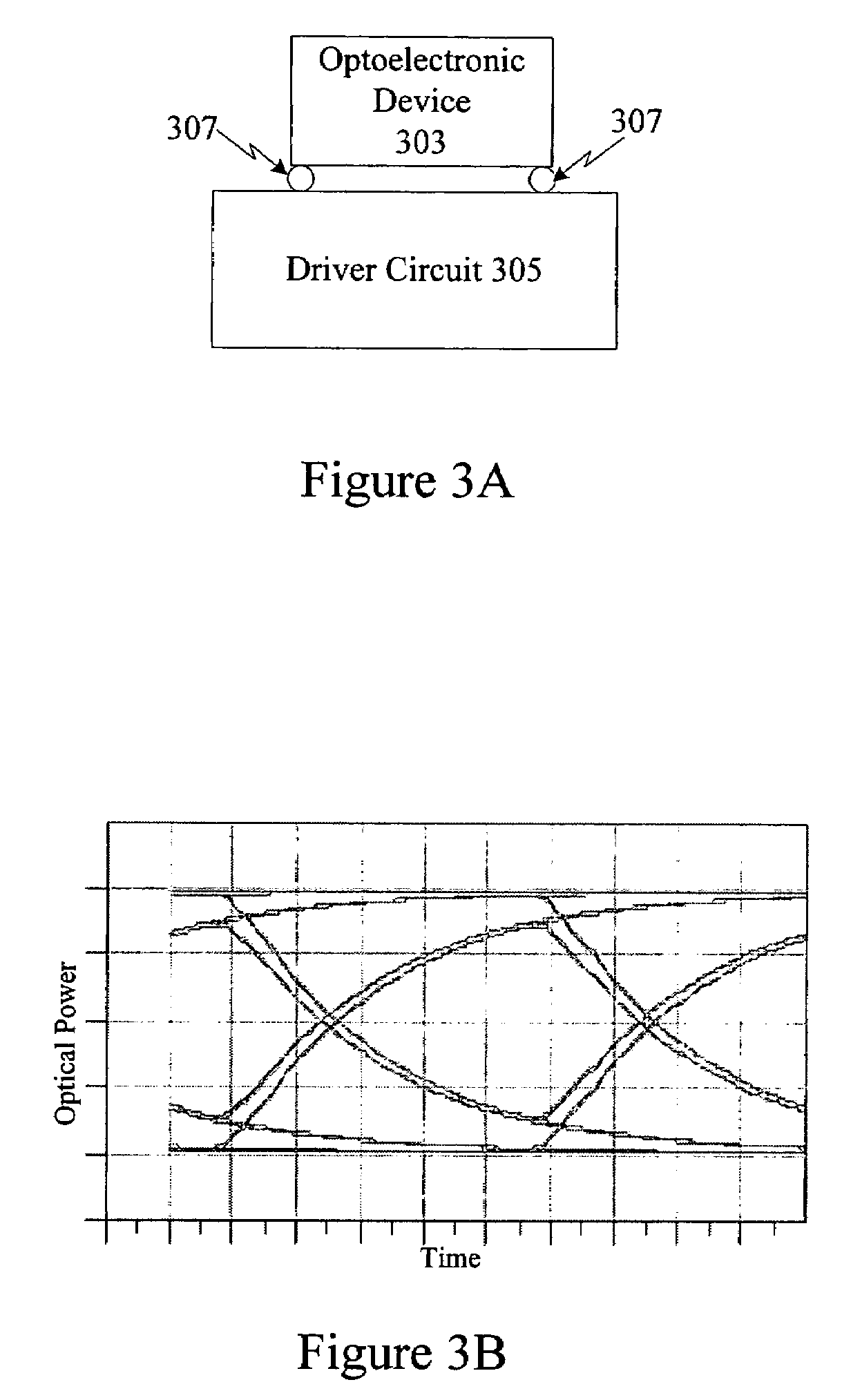Matching circuits on optoelectronic devices
a technology of optoelectronic devices and matching circuits, which is applied in the direction of static indicating devices, instruments, semiconductor lasers, etc., can solve the problems of negative affecting the performance of the transceiver, reducing the manufacturing yield, and inconsistent size and shape of the wire bond, so as to achieve the effect of optimal performance and precise and repeatable amount of inductance or capacitance to the optoelectronic devi
- Summary
- Abstract
- Description
- Claims
- Application Information
AI Technical Summary
Benefits of technology
Problems solved by technology
Method used
Image
Examples
Embodiment Construction
[0025]FIG. 4 shows a high-level block diagram of a preferred embodiment made in accordance with the teachings of the present invention. An optoelectronic device 401 is formed upon a substrate 403. A matching circuit 405 is formed upon the same substrate 403 and coupled to the optoelectronic device 401. A driver circuit 407 controls the output of the optoelectronic device 401. The matching circuit 405 is designed to tune the frequency response of the optoelectronic device 401 to the driver circuit 407 for optimal performance within a desired frequency range.
[0026]The matching circuit 405 introduces a precise amount of inductance, capacitance, or both to alter the frequency response of the optoelectronic device 401. The actual amount of inductance or capacitance required to produce an optimal performance may be determined empirically through circuit simulations.
[0027]FIGS. 5A–5D show possible circuit configurations for the matching circuit 405. The matching circuit 405 can be a simple...
PUM
 Login to View More
Login to View More Abstract
Description
Claims
Application Information
 Login to View More
Login to View More - R&D
- Intellectual Property
- Life Sciences
- Materials
- Tech Scout
- Unparalleled Data Quality
- Higher Quality Content
- 60% Fewer Hallucinations
Browse by: Latest US Patents, China's latest patents, Technical Efficacy Thesaurus, Application Domain, Technology Topic, Popular Technical Reports.
© 2025 PatSnap. All rights reserved.Legal|Privacy policy|Modern Slavery Act Transparency Statement|Sitemap|About US| Contact US: help@patsnap.com



